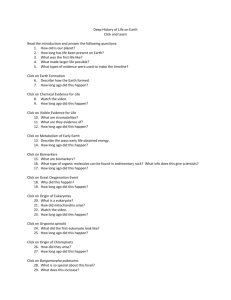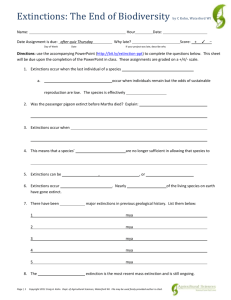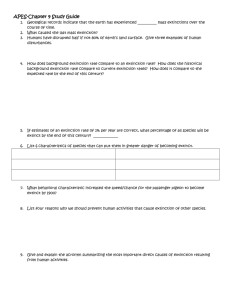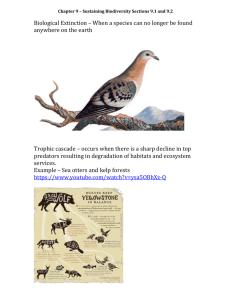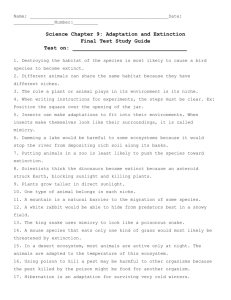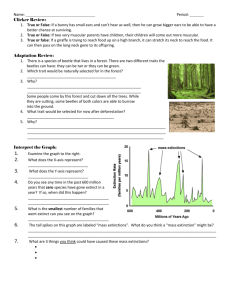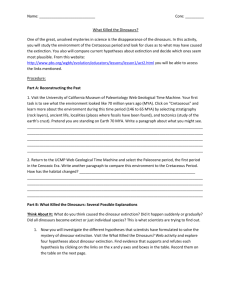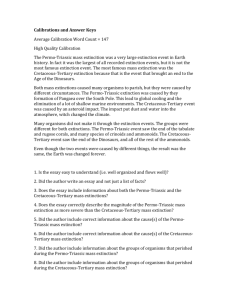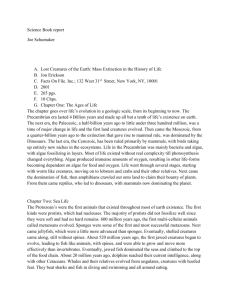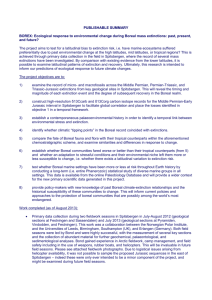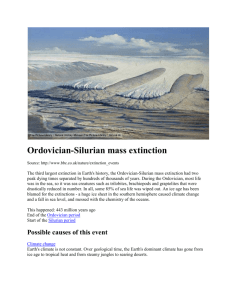Quiz
advertisement
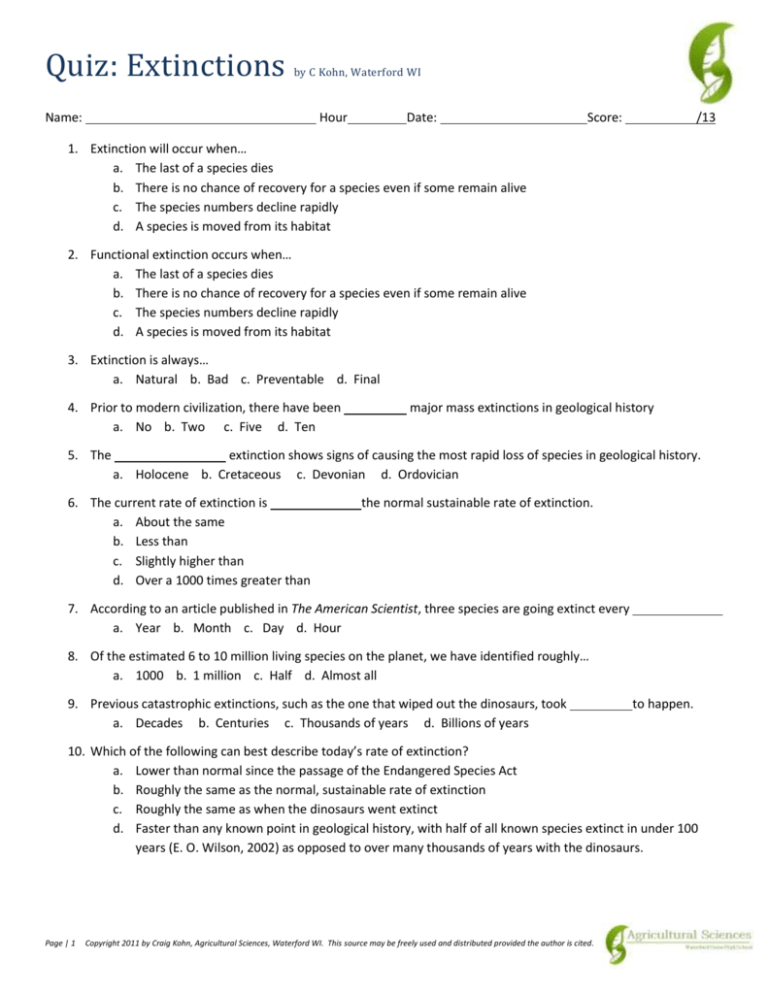
Quiz: Extinctions by C Kohn, Waterford WI Name: Hour Date: Score: /13 1. Extinction will occur when… a. The last of a species dies b. There is no chance of recovery for a species even if some remain alive c. The species numbers decline rapidly d. A species is moved from its habitat 2. Functional extinction occurs when… a. The last of a species dies b. There is no chance of recovery for a species even if some remain alive c. The species numbers decline rapidly d. A species is moved from its habitat 3. Extinction is always… a. Natural b. Bad c. Preventable d. Final 4. Prior to modern civilization, there have been a. No b. Two c. Five d. Ten 5. The major mass extinctions in geological history extinction shows signs of causing the most rapid loss of species in geological history. a. Holocene b. Cretaceous c. Devonian d. Ordovician 6. The current rate of extinction is a. About the same b. Less than c. Slightly higher than d. Over a 1000 times greater than the normal sustainable rate of extinction. 7. According to an article published in The American Scientist, three species are going extinct every a. Year b. Month c. Day d. Hour 8. Of the estimated 6 to 10 million living species on the planet, we have identified roughly… a. 1000 b. 1 million c. Half d. Almost all 9. Previous catastrophic extinctions, such as the one that wiped out the dinosaurs, took a. Decades b. Centuries c. Thousands of years d. Billions of years to happen. 10. Which of the following can best describe today’s rate of extinction? a. Lower than normal since the passage of the Endangered Species Act b. Roughly the same as the normal, sustainable rate of extinction c. Roughly the same as when the dinosaurs went extinct d. Faster than any known point in geological history, with half of all known species extinct in under 100 years (E. O. Wilson, 2002) as opposed to over many thousands of years with the dinosaurs. Page | 1 Copyright 2011 by Craig Kohn, Agricultural Sciences, Waterford WI. This source may be freely used and distributed provided the author is cited. 11. Natural species are important because… a. One quarter of prescription medicines were developed from compounds found in living species. b. Newfound wild species have the potential to help us produce stronger, more productive crops c. Only 20 plants supply 90% of our food; each is highly susceptible to disease because of selective breeding d. All of the above 12. As biodiversity decreases due to extinction, what happens to ecosystem function and services? a. They go down b. They increase c. They stay the same d. Ecosystem function is not affected by extinction, only by biodiversity 13. What are the four main causes of extinction today? a. Habitat loss, pollution, the hole in the ozone, and weakened solar radiation b. Habitat loss, pollution, invasive species, and overharvesting c. Litter, excess precipitation, invasive species, and overharvesting d. Litter, excess precipitation, the hole in the ozone, and weakened solar radiation Page | 2 Copyright 2011 by Craig Kohn, Agricultural Sciences, Waterford WI. This source may be freely used and distributed provided the author is cited.
